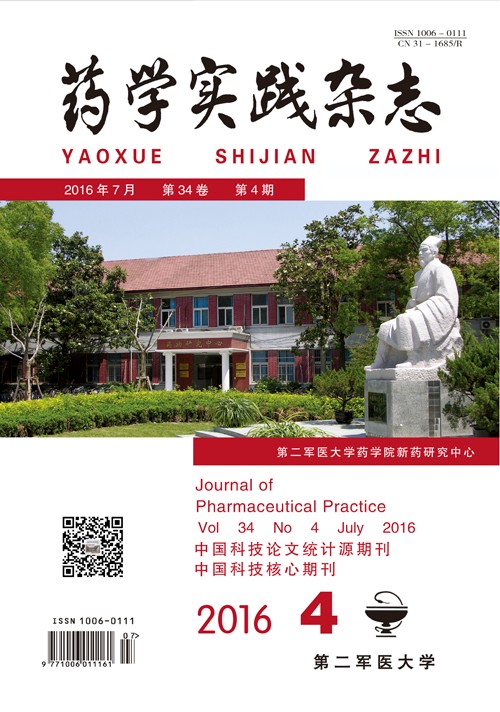|
[1]
|
Inaqaki NF, Inaqaki FF, Kokudo N, et al. Cell-based therapy for preventing postoperative adhesion and promoting regeneration after hepatectomy[J]. Hepatobiliary Pancreat Sci, 2015, 22(7):524-530. |
|
[2]
|
Reed KL, Heydrick SJ, Aarons CB,et al. A neurokinin-1 receptor antagonist that reduces intra-abdominal adhesion formation decreases oxidative stress in the peritoneumn[J]. Am J Physiol Gastrointest Liver Physiol, 2007, 293(3):G544-G551. |
|
[3]
|
Pfeifer S, Lobo R, Goldberg J, et al. Practice Committee of American Society for Reproductive Medicine in collaboration with Society of Reproductive Surgeons. Pathogenesis, consequences, and control of peritoneal adhesions in gynecologic surgery:a committee opinion[J]. Fertil Steril, 2013, 99(6):1550-1555. |
|
[4]
|
Dinarvand P, Hassanian SM, Weiler H, et al. Intraperitoneal administration of activated protein C prevents postsurgical adhesion band formation[J]. Blood, 2015, 125(8):1339-1348. |
|
[5]
|
Falk K, Bj rquist P, Str mqvist M, et al. Reduction of experimental adhesion formation by inhibition of plasminogen activator inhibitor type 1[J]. Br J Surg, 2001, 88(2):286-289. |
|
[6]
|
White JC, Jiang ZL, Diamond MP, et al. Macrophages induce the adhesion phenotype in normal peritoneal fibroblasts[J]. Fertil Steril, 2011, 96(3):758-763. |
|
[7]
|
Ohashi K, Yoshimoto T, Kosaka H, et al. Interferon γ and plasminogen activator inhibitor 1 regulate adhesion formation after partial hepatectomy[J]. Br J Surg, 2014, 101(4):398-407. |
|
[8]
|
Robertson D, Lefebvre G, Leyland N, et al. Adhesion prevention in gynaecological surgery[J]. J Obstet Gynaecol Can, 2010, 32(6):598-608. |
|
[9]
|
Diamond MP, Freeman ML. Clinical implications of postsurgical adhesions[J]. Hum Reprod Update, 2001, 7(6):567-576. |
|
[10]
|
Crabtree JH. Development of surgical guidelines for laparoscopic peritoneal dialysis access:down a long and winding road[J]. Perit Dial Int, 2015, 35(3):241-244. |
|
[11]
|
Dowson HM, Bong JJ, Lovell DP, et al. Reduced adhesion formation following laparoscopic versus open colorectal surgery[J]. Br J Surg, 2008, 95(7):909-914. |
|
[12]
|
Liu C, Lu Q, Zhang Z, et al. A randomized controlled trial on the efficacy and safety of a new crosslinked hyaluronan gel in reducing adhesions after gynecologic laparoscopic surgeries[J]. J Minim Invasive Gynecol, 2015, 22(5):853-863. |
|
[13]
|
Binda MM, Hellebrekers BW, Declerck PJ,et al. Effect of reteplase and PAI-1 antibodies on postoperative adhesion formation in a laparoscopic mouse model[J]. Surg Endosc, 2009, 23(5):1018-1025. |
|
[14]
|
Sahin M, Cakir M, Avsar FM, et al. The effects of anti-adhesion materials in preventing postoperative adhesion in abdominal cavity(anti-adhesion materials for postoperative adhesions)[J]. Inflammation, 2007, 30(6):244-249. |
|
[15]
|
Takaqi K, Araki M, Fukuoka H,et al. Novel powdered anti-adhesion material:preventing postoperative intra-abdominal adhesions in a rat model[J]. Int J Med Sci, 2013, 10(4):467-474. |
|
[16]
|
Ward BC, Panitch A. Abdominal adhesions:current and novel therapies[J]. J Surg Res, 2011, 165(1):91-111. |
|
[17]
|
Brochhausen C, Schmitt VH, Planck CN, et al. Current strategies and future perspectives for intraperitoneal adhesion prevention[J]. J Gastrointest Surg, 2012, 16(6):1256-1274. |
|
[18]
|
Ahmad G, O'Flynn H, Hindocha A, et al. Barrier agents for adhesion prevention after gynaecological surgery[J]. Cochrane Database Syst Rev, 2015, 4:CD000475. |
|
[19]
|
Ten Broek RPG, Strommel MWJ, Strik C,et al. Benefits and harms of adhesion barriers for abdominal surgery:a systematic review and meta-analysis[J]. Lancet, 2014, 383(9911):48-59. |
|
[20]
|
Koketsu S, Sameshima S, Okuyama T, et al. An effective new method for the placement of an anti-adhesion barrier film using an introducer in laparoscopic surgery[J]. Tech Coloproctol, 2015, 19(9):551-553. |
|
[21]
|
Lim R, Morrill JM, Lynch RC,et al. Practical limitations of bioresorbable membranes in the prevention of intra-abdominal adhesions[J]. J Gastrointest Surg, 2009, 13(1):35-41. |
|
[22]
|
Ortiz MV, Awad ZT. An easy technique for laparoscopic placement of Seprafilm[J]. Surg Laparosc Endosc Percutan Tech, 2009, 19(5):e181-e183. |
|
[23]
|
Schonman R, Corona R, Bastidas A, et al. Intercoat gel(oxiplex):efficacy, safety, and tissue response in a laparoscopic mouse model[J]. J Minim Invasive Gynecol, 2009, 16(2):188-194. |
|
[24]
|
Chaturvedi AA, Lomme RM, Hendriks T, et al. Prevention of postsurgical adhesions using an ultrapure alginate-based gel[J]. Br J Surg, 2013, 100(7):904-910. |
|
[25]
|
Yang B, Gong C, Zhao X, et al. Preventing postoperative abdominal adhesions in a rat model with PEG-PCL-PEG hydrogel[J]. Int J Nanomedicine, 2012, 7:547-557. |







 DownLoad:
DownLoad: